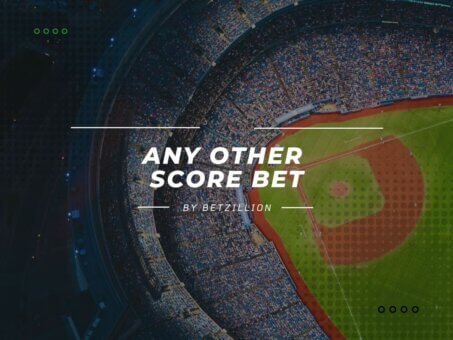This website uses cookies so that we can provide you with the best user experience possible. Cookie information is stored in your browser and performs functions such as recognising you when you return to our website and helping our team to understand which sections of the website you find most interesting and useful.
Sports Betting Lines Explained

Understanding sports betting lines is essential for every bettor. It helps you know the wagers to place and those to ignore. Good knowledge of these lines, how they move and finding value will guarantee wins in different sports. Hence, it’s essential to learn how to use them.
What Is a Betting Line?
A betting line is the way bookmakers present a certain matchup. It shows which teams (or athletes) are involved in the match, who’s the favorite and who’s the underdog, and odds for point spread, moneyline, and totals. You can also see the potential payout.
Let’s take an online sports betting line for an NBA game between the Golden State Warriors and Los Angeles Lakers as an example:
| Team | Spread | Money | Total |
|---|---|---|---|
| Golden State Warriors (+3.5) | -108 | +138 | -110 |
| @ Los Angeles Lakers (-3.5) | -112 | -164 | -110 |
In the example above, the Warriors are the underdog and the Lakers are the favorites. If you take the spread, the Lakers need to win by 3.5 points in order for your bet to win. If you stake on the Lakers to win outright, you need to wager $164 for a potential profit of $100.
How Betting Lines Work
To help you get a better understanding of betting lines, we’ll cover some key factors. This includes explaining who creates them, why they change, and different odds formats.
Who Creates the Betting Lines?
Bookmakers are responsible for creating betting lines. As part of the process, they analyze several factors and use primary sports information.
The experts responsible for creating the betting lines work based on 2 different types of markets. One is the statistical market, and the other involves significant insight or intuition. They will consider the team’s past results, player performance, and advanced stats. Factors like motivation, injuries, and home/away will also be taken into account.
During the creation of the lines, wagering volume significantly influences final odds and how betting lines work. Bookies will adjust the prices if there is a significant number of bets on one team. The goal is to attract bets on the other team and balance the action, which lowers the risk.
Another significant factor the compiler considers when setting lines is the odds of other reputable bookmakers.
American, Decimal, & Fractional Odds
The American, decimal, and fractional odds are the main formats that bookies use to display betting lines to bettors. Punters should know how to read each of these 3 types of odds:
- American Odds
Another name for this type of odds is the US or moneyline odds. It’s a common way of displaying betting lines used by sportsbooks that target the US market. You can recognize the American odds by the positive (+) or negative (-) signs accompanying a number.
The positive sign indicates how much money you will win if you stake $100; the negative sign shows how much you need to bet in order to get a $100 profit. For example, if the odds are +200, your potential profit is $200 for every $100 you invest. If the odds are -200, you need to stake $200 to get $100.
- Decimal Odds
Unlike the American odds, the decimal doesn’t involve a positive or negative symbol. They signify the amount a bettor wins for every unit dollar stake. Note that the number in the decimal odds defines the final payout, not the profit.
For example, a punter can know the total payout after a bookmaker sets a betting line for a team at 1.83. If they place a $100 wager, the outcome will yield 100 x 1.8, which equals $180.
- Fractional Odds
Fractional odds are primarily used by bookmakers in the UK and Ireland. This format shows the payout relative to the amount of money you need to stake. If a team has fractional odds of 9/2 placed on it, the punter stands to win $9 for every $2 they stake.
The fractional lines are simple. Teams with lower fractional odds are usually the favorite; those with higher values are typically underdogs.
What Do the Plus (+) and Minus (-) Mean in Sports Betting?
Both the plus and minus signs are common in the American odds. They define whether the team is rated as an underdog or a favorite. The 2 characters also influence the payout of a bettor depending on the odds value. If a minus (-) precedes a number, it signifies the team is a favorite. The squad is an underdog if a positive (+) sign precedes the price.
Let’s say that the Boston Celtics have odds of -250 and the Miami Heat are priced at +200. The Celtics are the favorite for that game, and the Heat are the underdogs.
How do the minus, plus, and signs influence payout in sports betting? Using the example above, the punter gets a $200 payout for a $100 successful stake on the Celtics. On the other hand, they win $100 for a $250 wager on the Heat.
Apart from the significance of the plus and minus signs in American odds, they also work for totals. For instance, a bettor can wager on the final score of an NFL match between the Kansas City Chiefs and Philadelphia Eagles. If the odds for over 45 are +120 and under 45 are -100, it signifies that “under 45” is the more likely outcome.
The plus and minus signs are used for point spread as well. For example, the points spread for the Chiefs is +4.5, while the Eagles have a points spread of -4.5. The Chiefs can lose by 4 points and still cover the spread, and the Eagles need to win the game by at least 5 to do the same.
Why Do Betting Lines Change?
In sportsbooks, betting lines change due to specific actions from the bookie. There are 2 major reasons for moving betting lines:
- To encourage/discourage bettors from placing a wager on a selection
Bookmakers employ the fundamental principles of demand and supply when setting betting lines. If a certain wagering volume is more than what a bookie desires, they make it less attractive for users on their site.
Sportsbooks also encourage punters to wager on a particular selection if the betting volume is insufficient. The primary goal of bookies when changing lines is to ensure they profit from each selection.
- External Effects
Apart from the movement due to betting action, external effects are also significant. Sports betting lines can shift due to factors like weather changes, injuries, goalie selections, or last-minute scratches.
For instance, weather conditions like snow can affect NFL or soccer matches. The game will have fewer points than a typical match, influencing the over/under betting line. Similar to weather, other factors like injuries also cause a change in the pre-set betting line due to unforeseen possibilities.
Some bookmakers will also “tail sharps,” which means they monitor specific expert bets on their websites. Tailing sharps often causes significant shifts in the betting line.
How to Read Betting Lines

The first move to reading a betting line is checking out the teams involved in a particular game. Next, you need to identify the type of wager,
Here are the steps on how to read betting lines for different kinds of wagers:
- Determine the type of odds (American, fractional, or decimal)
- Identify the favorite and the underdog
- Make a selection
The Point Spread Bets
Point spread bets are associated with high-scoring sports like football and basketball. The wager involves betting on the margin of victory of a specific game. In the point spread, the bookie favors the better team by a particular number of points.
An example of a point spread wager is an NFL game involving the New England Patriots and Cincinnati Bengals. If the Patriots are -6.5 favorites, they need to win by 7 points or more for the punter to collect a payout.
If the Bengals are a +6.5 underdog, they need to either lose by less than 7 points or win the game for bettors to succeed with their wager. In cases where the point spread is a whole number, like Bengals +7 and Patriots win by 7 points, it equals a push. For this reason, the bookie will refund all bets.
Here are the steps to placing point spreads using betting lines:
- Select a reputable bookmaker
- Pick a suitable sport for your point spread wager
- Click the spread you want to wager on in the game module
- Navigate to the betting slip
- Enter the appropriate stake
- Place the bet
Moneyline Bets
Moneyline wagers are usually considered more basic compared to the point spread. They are also known as straight bets because they involve betting on the team or an athlete to win the match outright. The sportsbook will provide the proper payout if a bettor makes the correct selection.
With the moneyline wagers, the favorite usually carries a minus sign next to the odds value. For the underdogs, their odds have a positive value (+). Let’s take an NBA match between the Los Angeles Lakers and the Houston Rockets as an example.
The Lakers have a moneyline at -120, meaning they are the favorites, and a bettor needs to wager $120 to win $100. Odds of +134 for the Rockets signify they are the underdogs, and the punter will win $134 if they stake $100. Overall, the moneylines are simple for beginners and easier to use.
Here are the steps to placing moneylines using betting lines:
- Select a top bookie and create a free account
- Pick a sport for your moneyline wager
- Choose the athlete or team for the bet
- Navigate to the betting slip in the bookmaker
- Enter the appropriate amount
- Place the wager
Proposition Bets
Prop bets allow punters to predict particular events in a single match. There are several types of these wagers, such as team props, player props, and game props. Examples include point totals, “will it occur,” individual performances, first on the team, and timing wagers. Some bookmakers will also offer novelty props like whether a coin toss is a head or a tail.
Some benefits of prop bets include flexibility in wagering, entertainment, and high profitability. This type of wager doesn’t usually resolve in a push, unlike the over/under.
Here are the steps to placing props using the best sports lines for today:
- Select an online bookie and create an account
- Pick a sport for your wager
- Choose an event
- Navigate to the betting slip
- Enter the appropriate stake
- Place the bet
Point Total Bets
Another name for the point total wagers is over/under. It’s a bet you place on a specific game’s total combined score. The game’s essence is predicting whether a match’s overall score will be over or under a specific amount.
One example is an NFL game between the Kansas City Chiefs and the San Francisco 49ers. If a bookmaker sets the point total at 52, a punter needs to predict whether the total amount of points scored by both teams will be over or under 52.
If the Chiefs win the game 35-22, the sum of points is 57. Bettors who placed wagers on totals above 52 will receive a payout, and those who selected under will lose.
Here are the steps to placing point total stakes using betting lines:
- Select an online sportsbook
- Pick a sport for your point total wager
- Choose a sporting event
- Navigate to the betting slip in the bookmaker
- Enter the appropriate wagering amount
- Place the bet
When Is the Best Time to Place a Bet?
There’s no specific time best for placing bets, but there are various suitable periods to consider as a punter. Here are 3 significant ones:
- When the Lines are Released: If you’re a good handicapper, you’ll find more value in wagering on the early lines. These lines move fast because many sharp bettors will look to take advantage of value odds, and the bookies will adjust prices accordingly.
- A few Minutes before the Game Starts: For the most reasonable and expected outcome of your wagers, it may be advisable to bet minutes before a match begins. This method reduces loss due to certain circumstances, like absence from player injuries or weather conditions.
- In-Play Wagering: Placing live wagers helps bettors to make fewer hasty decisions. In-play bets ensure that individuals can comprehend the trend of the game and make selections based on it.
What Sports Can Betting Lines Be Used For?
Final Words
In this guide, we covered the most important elements of sports betting lines. It’s essential to understand them to be able to identify wager types, spot favorites and underdogs, and estimate payouts.
Knowing betting lines, how they move, and when to place your wager will also allow you to get the most value and increase your chances of profit.
Related articles
Granular Betting (1st Drive Result)
Reverse Line Movement







